Chicken Feet Trade & Exports — Iran → South Korea
Executive summary — quick view
-
Public trade trackers report no recorded commercial shipments of chicken feet from Iran to South Korea in the trailing-12-month windows up to mid-2025; available aggregator data show Iran had zero recorded chicken-paw exports in that period.
-
South Korea’s market for chicken feet is small and specialised compared with major importers (e.g., Vietnam, China). South Korea imports various chicken products but large volumes of raw chicken feet are typically sourced from Southeast Asian suppliers.
-
Regulatory access is the primary barrier: Korea’s Animal and Plant Quarantine Agency (APQA) accepts poultry and poultry-product imports only from approved countries and approved establishments — exporting countries must be on APQA’s eligible list and have authorized processing establishments. Iran is not listed among the countries/regions approved for general poultry meat exports to Korea (APQA lists the eligible exporting countries and approved establishment procedures).
Trade volumes & recent trends (mid-2025 snapshot)
-
Recorded Iran→Korea shipments (chicken feet): public aggregator/manifest summaries (Volza) report 0 shipments from Iran in the recent 12-month snapshots — indicating either no direct trade, reclassification under another HS code, or routing via third countries.
-
South Korea import profile: South Korea imports significant volumes of chicken and chicken preparations overall, but when it comes to raw/frozen chicken feet the main global suppliers and trade flows favour countries in Southeast Asia and large exporters such as Brazil/Thailand for other poultry lines. Korea’s visible trade in chicken feet appears limited and often handled by specialist buyers.
Interpretation: As of mid-2025, there is no material recorded direct trade flow of frozen/raw chicken feet from Iran to South Korea in standard public datasets. Any attempt to start direct trade must first clear Korea’s import eligibility hurdles.
Why the gap exists — access & sanitary approval
-
APQA (Korea) policy: Korea requires the exporting government to submit a list of eligible establishments and for Korea either to accept that list or perform audits/onsite verifications. Korea publishes lists of eligible countries/regions and notes specific requirements per commodity. If a country (or its establishments) is not on that list for poultry, exports of poultry meat/parts to Korea are not permitted.
-
Practical effect: Even if an Iranian processor can meet international hygiene standards, poultry/poultry-part exports require formal APQA acceptance and a registered list of establishments; without that, shipments are not permitted and will be refused or impounded at entry.
HS classification and documents typically required by Korea
-
HS codes: “Chicken feet / paws” are usually declared under poultry meat/parts lines — exact 6–10 digit classification can vary. Exporters must confirm the exact HS code used by Korean customs for the intended product (fresh, frozen, prepared). Use the Korean tariff schedule or consult an experienced customs broker to avoid misclassification.
-
Typical documentation: commercial invoice, packing list, bill of lading/air waybill, certificate of origin, certificate(s) of veterinary/health status, freezing certificate (if frozen), slaughter date certificate, and any certificate of eligibility for the exporting establishment. Korean importers commonly require a “freezing certificate” and explicit statements about freezing/slaughter dates. International exporters often must supply a veterinary certificate in APQA’s required format.
Sanitary & SPS considerations (critical)
-
Approved establishments only: Korea requires the exporting country to notify APQA of eligible establishments; APQA approval (sometimes via on-site audit) is required for meat/poultry exports. This is a non-negotiable precondition.
-
Avian influenza (HPAI) & disease status: Korea monitors animal disease outbreaks closely; HPAI status, regional suspensions, or temporary bans can change quickly and affect import permission even for approved partners. Pre-export testing and up-to-date health attestations are typically required.
Logistics, packaging & quality specs
-
Product form & packing: standard commercial practice for frozen feet is IQF or whole frozen feet packed in hygienic inner PE bags inside master cartons (commonly 10–20 kg cartons) on pallets. Shipping in reefers at ≤ −18°C with documented temperature logs is standard. Importers may require specific ice/glaze limits or moisture specs.
-
Transport routes: sea freight in reefer containers is typical (longer lead time), while air freight is rare due to low unit value. Land transit is not feasible between Iran and Korea — shipments would be by sea (via Persian Gulf → transshipment hubs → Busan/Incheon). Transit via third countries is common but requires additional documentation and may increase scrutiny.
Market demand in South Korea & likely buyers
-
Demand type: South Korean demand for chicken feet is niche (culinary uses, processed foods, pet food, rendering/collagen extraction). Large industrial demand for feet is much more concentrated in Asian markets like Vietnam or China. Korean buyers tend to source from countries already certified for poultry exports to Korea.
-
Buyer categories to approach (if access granted): importers supplying ethnic food outlets, pet-food/rendering processors, food processors using collagen, and specialty wholesalers.
Competitive & commercial considerations
-
Price & competition: global suppliers with established Korea-access and scale (Brazil, Thailand, Vietnam, China) will be price-competitive. Iran’s potential differentiators would be proximity to Asian hubs (but not to Korea specifically), possibly competitive pricing and ability to supply consistently — provided regulatory access is secured.
-
Payment & insurance: for new trade lanes, Korean importers typically prefer reliable payment methods and may require letters of credit or escrow. Marine/transport insurance and inspection certificates (pre-shipment inspections) reduce buyer risk.
Regulatory & political risks
-
Export eligibility risk: without APQA recognition (country + approved establishments), exports are blocked. Getting onto APQA’s eligible list typically requires government-to-government negotiations, documentation exchange and sometimes on-site audits.
-
Sanctions / banking friction: Iran faces international banking frictions which can complicate payments and logistics; Korean importers (and their banks) will perform AML/sanctions checks which may deter business unless payment channels are clarified and legal.
-
Disease outbreaks: HPAI and other animal disease events can trigger temporary suspensions.
Practical step-by-step checklist for an Iranian exporter targeting Korea
-
Confirm APQA eligibility: contact Iran’s competent authority (Ministry of Agriculture / Veterinary Organization) to determine whether Iran is on APQA’s list for poultry or whether there is an ongoing negotiation to gain access. If not listed, initiate government-level discussion with APQA.
-
Establishment listing: prepare the formal list of processing/slaughter establishments you want APQA to consider. Ensure those establishments have HACCP, traceability, cold-chain records and are ready for audit.
-
Document readiness: prepare veterinary certificate templates, freezing certificates, slaughter date records, and demonstration of non-commingling practices. Have certificates translated if required.
-
Pilot & third-party checks: if APQA grants provisional access, run a small pilot shipment with third-party inspection and temperature logging. Use L/C or escrow as payment security.
-
Engage Korean importers: approach specialized importers whose business model is niche products (pet food, rendering, ethnic food wholesalers)—they will advise on preferred packaging/labels and preferred paperwork.
Recommendations & commercial strategy
-
Short term (0–6 months): Focus on regulatory pathway—get clarity from Iranian veterinary authorities about APQA eligibility status and the list of approved exporters. Do not attempt direct shipments without APQA approval.
-
Medium term (6–18 months): If APQA negotiation succeeds, pilot small shipments with rigorous pre-shipment inspection and freezing/slaughter documentation. Consider value-added presentation (IQF, cleaned/derawed feet) for better acceptance.
-
Alternative routes: because direct Iran→ Korea access is limited, consider selling to intermediaries in countries already approved for Korea (e.g., traders in Southeast Asia) — but be aware of re-export rules and extra inspections. Also prioritize markets where Iran already has established exports (regional Gulf neigh bours, some Central Asian buyers) while pursuing Korea access.
Quick annex — suggested next actions (I can do these now)
Pick any one and I’ll prepare it immediately in this chat (no waiting):
-
Draft a sample set of export documents (commercial invoice, packing list, freezing certificate template and a sample veterinary certificate) formatted for a pilot Iran→Korea shipment (noting that APQA final format may need adjustment).
-
Run a deep customs data check across UN-Comtrade / TheTradeVision / Tridge to search for any Iran-origin shipments to Korea possibly recorded under alternate HS codes or routed via third countries; I’ll list exact HS codes and any found shipment records.
-
Draft a short outreach email (English + Korean) to send to Korean importers or APQA asking about eligibility and requesting steps to get Iranian establishments approved.
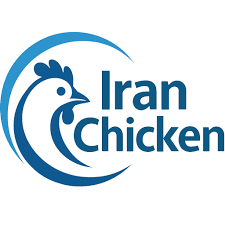
According new addition text and essay
NONADSHOP TRADE COMPANY
Ready for supply and helping to buyers for chicken feet and with high experience in export chicken feet you can start trade with high profit in trade and import and export chicken feet
For more info call us….
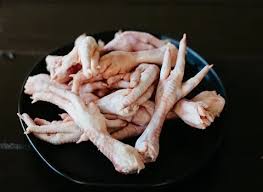
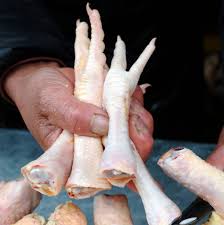
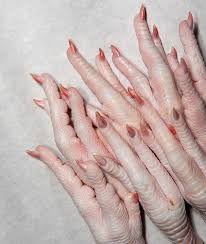
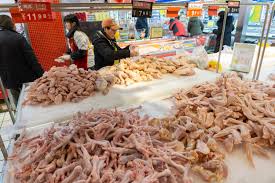
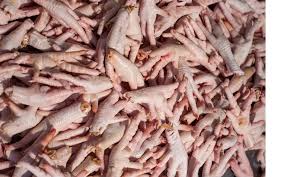
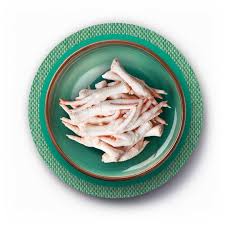

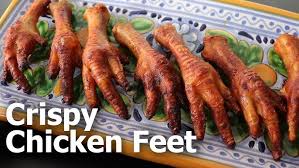


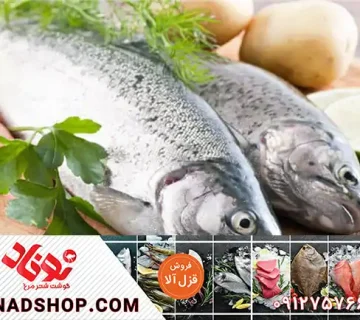
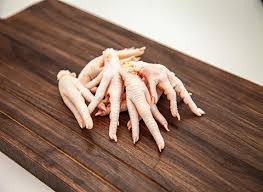
بدون دیدگاه